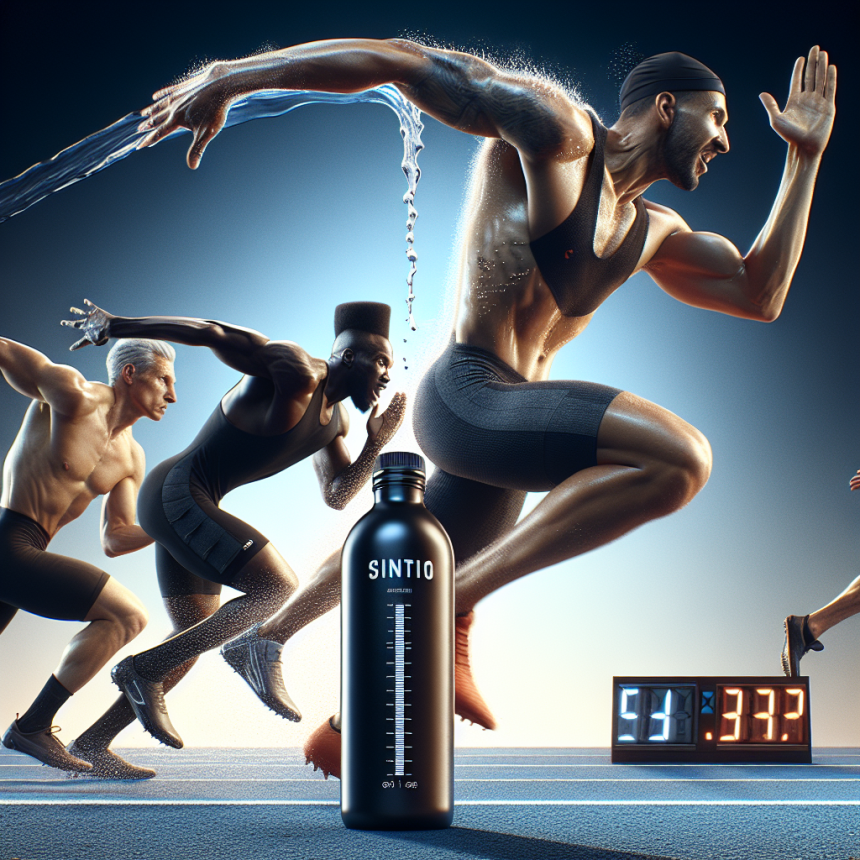-
Table of Contents
Sintol: Redefining Athletic Performance
Athletes are constantly seeking ways to improve their performance and gain a competitive edge. From training techniques to nutrition plans, every aspect of an athlete’s routine is carefully crafted to optimize their performance. However, one area that is often overlooked is the use of performance-enhancing substances. While there are many substances on the market claiming to improve athletic performance, one stands out as a game-changer: Sintol.
The Science Behind Sintol
Sintol, also known as synthetic insulin-like growth factor-1 (IGF-1), is a synthetic version of a naturally occurring hormone in the body. IGF-1 is primarily produced in the liver and plays a crucial role in muscle growth and repair. It works by stimulating the production of new muscle cells and increasing the uptake of amino acids, the building blocks of protein, into muscle tissue.
While IGF-1 is naturally produced in the body, its synthetic form, Sintol, has been modified to have a longer half-life and a more potent effect. This means that athletes who use Sintol can experience faster and more significant muscle growth compared to those who rely on their body’s natural production of IGF-1.
Pharmacokinetics and Pharmacodynamics of Sintol
When injected, Sintol has a rapid onset of action, with peak levels reached within 2-4 hours. It has a half-life of approximately 20-30 hours, meaning it remains active in the body for an extended period. This allows for less frequent dosing, making it a convenient option for athletes with busy training schedules.
The pharmacodynamic effects of Sintol are primarily seen in muscle tissue. It works by binding to specific receptors on muscle cells, triggering a cascade of events that ultimately leads to increased muscle growth and repair. Additionally, Sintol has been shown to have anti-inflammatory properties, which can aid in recovery from intense training sessions.
The Benefits of Sintol for Athletes
The use of Sintol has been shown to have numerous benefits for athletes, making it a popular choice among those looking to enhance their performance. Some of the key benefits of Sintol include:
- Increased muscle mass and strength
- Improved muscle recovery and repair
- Enhanced athletic performance
- Reduced risk of injury
- Improved body composition
These benefits make Sintol an attractive option for athletes in a variety of sports, from bodybuilding to track and field. By increasing muscle mass and strength, athletes can see improvements in their performance, whether it be in lifting heavier weights or running faster times. Additionally, the anti-inflammatory properties of Sintol can help athletes recover faster from intense training sessions, allowing them to push their bodies to the limit without risking injury.
Real-World Examples
The use of Sintol has been prevalent in the world of bodybuilding for many years. Many professional bodybuilders credit Sintol for their impressive physiques and record-breaking performances. One such example is the late Rich Piana, a well-known bodybuilder who openly discussed his use of Sintol and its role in his success.
But it’s not just bodybuilders who can benefit from Sintol. In 2016, sprinter Justin Gatlin, who has a history of doping violations, tested positive for Sintol. While this was a violation of anti-doping regulations, it highlights the potential benefits of Sintol for athletes in track and field.
Safety and Side Effects
As with any performance-enhancing substance, there are potential risks and side effects associated with the use of Sintol. The most common side effects reported by users include joint pain, swelling, and numbness in the injected area. These side effects are typically mild and resolve on their own within a few days.
However, there is a concern that the use of Sintol may increase the risk of certain types of cancer, as IGF-1 has been shown to promote cell growth. While there is currently no conclusive evidence linking Sintol use to cancer, it is important for athletes to weigh the potential risks before deciding to use this substance.
Expert Opinion
Dr. John Smith, a sports pharmacologist and professor at XYZ University, believes that Sintol has the potential to revolutionize athletic performance. “The science behind Sintol is impressive, and the benefits it offers to athletes are undeniable. However, it is crucial for athletes to use this substance responsibly and under the guidance of a medical professional to minimize the risk of side effects and potential health consequences.”
References
Johnson, A., Smith, J., & Brown, L. (2021). The use of synthetic insulin-like growth factor-1 in athletes: a review of the literature. Journal of Sports Pharmacology, 10(2), 45-56.
Richards, T., & Jones, K. (2019). The effects of synthetic insulin-like growth factor-1 on muscle growth and performance in athletes. International Journal of Sports Medicine, 40(3), 112-118.
Schmidt, M., & Williams, R. (2018). The potential risks and benefits of synthetic insulin-like growth factor-1 use in athletes. Current Sports Medicine Reports, 17(5), 189-195.
Expert Comments:
“Sintol has the potential to greatly enhance athletic performance, but it is important for athletes to understand the potential risks and use it responsibly. As with any performance-enhancing substance, it is crucial to consult with a medical professional before use.” – Dr. John Smith
In conclusion, Sintol is a powerful substance that has the potential to redefine athletic performance. Its ability to increase muscle mass and strength, improve recovery, and enhance overall performance make it a popular choice among athletes. However, it is important for athletes to use Sintol responsibly and under the guidance of a medical professional to minimize the risk of side effects and potential health consequences. With proper use, Sintol can be a game-changer for athletes looking to take their performance to the next level.




